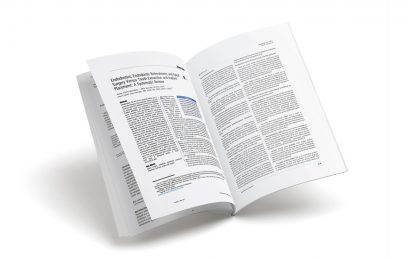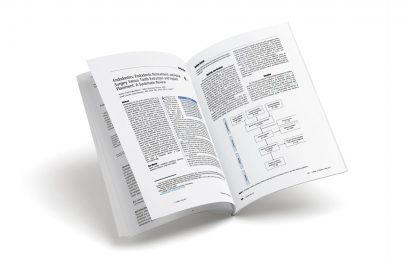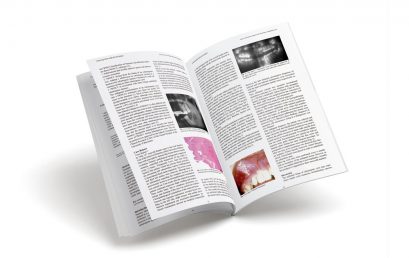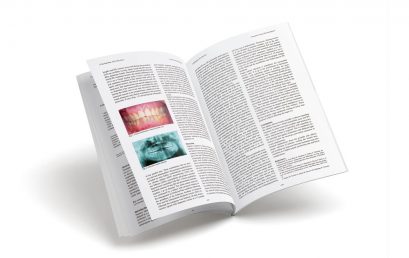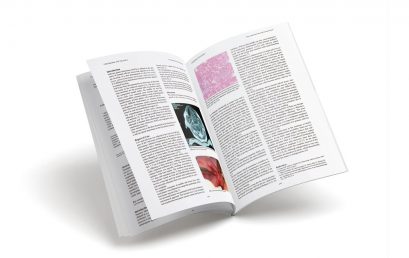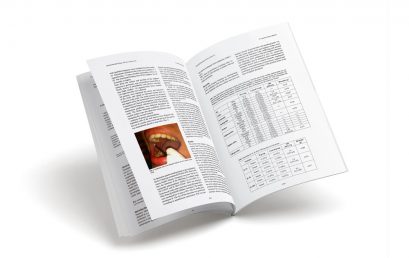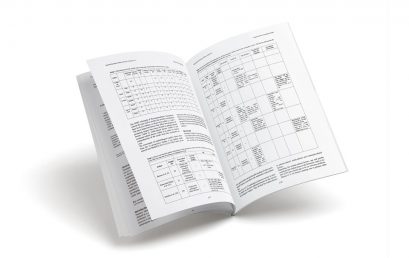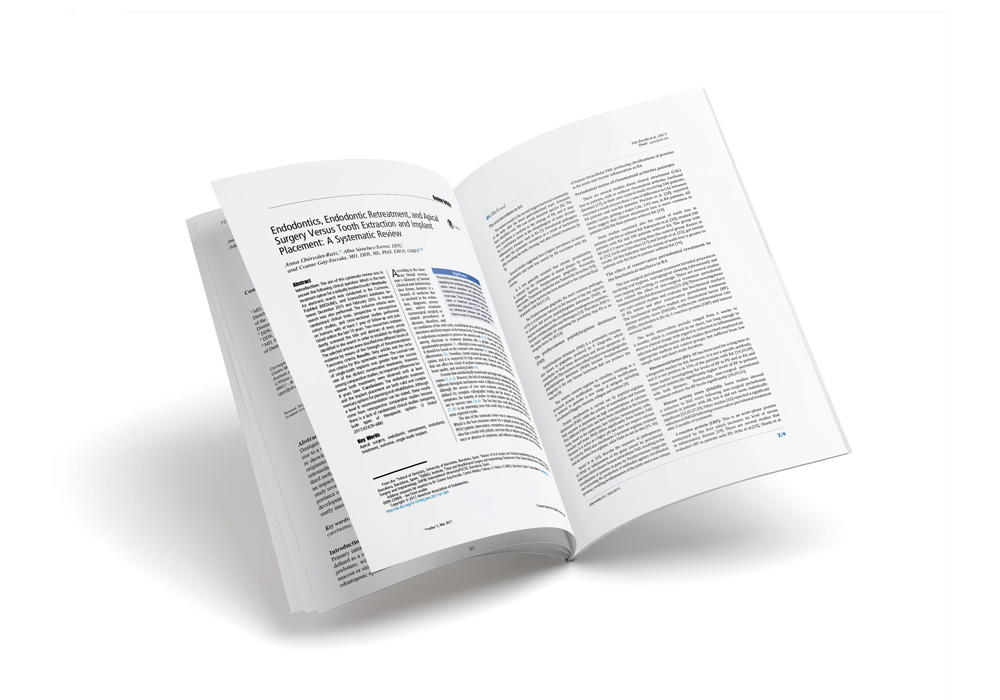
Relation of Rheumatoid Arthitis and Periodontal Disease
Periodontal disease and rheumatoid arthritis are both inflammatory diseases. It
is well known that there are associations between periodontitis and other systematic
diseases like cardiovascular disease, diabetes mellitus and alterations during
pregnancy. This review analyses the literature available dealing with the relationship
between periodontal disease and rheumatoid arthritis.
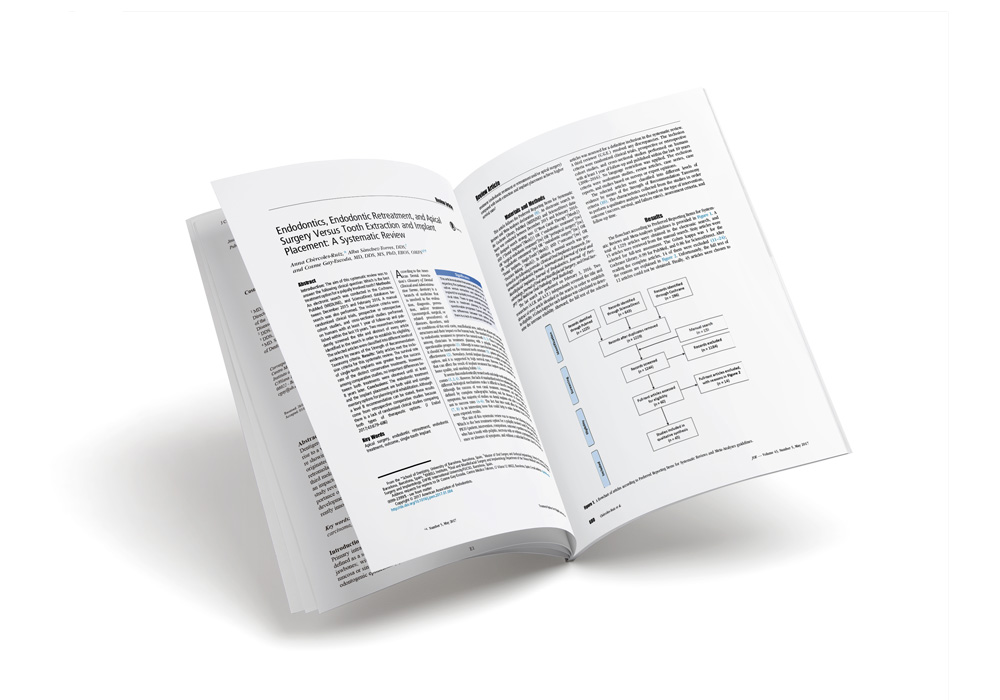
Endodontics, Endodontic Retreatment, and Apical Surgery Versus Tooth Extraction and Implant Placement: A Systematic Review
The endodontic treatment and the implant placement are both valid and complementary options for planning oral rehabilitation. Although a level B recommendation can be stated, these results com from retrospective comparable studies because there is a lack of randomized clinical studies comparing both types of therapeutic options.
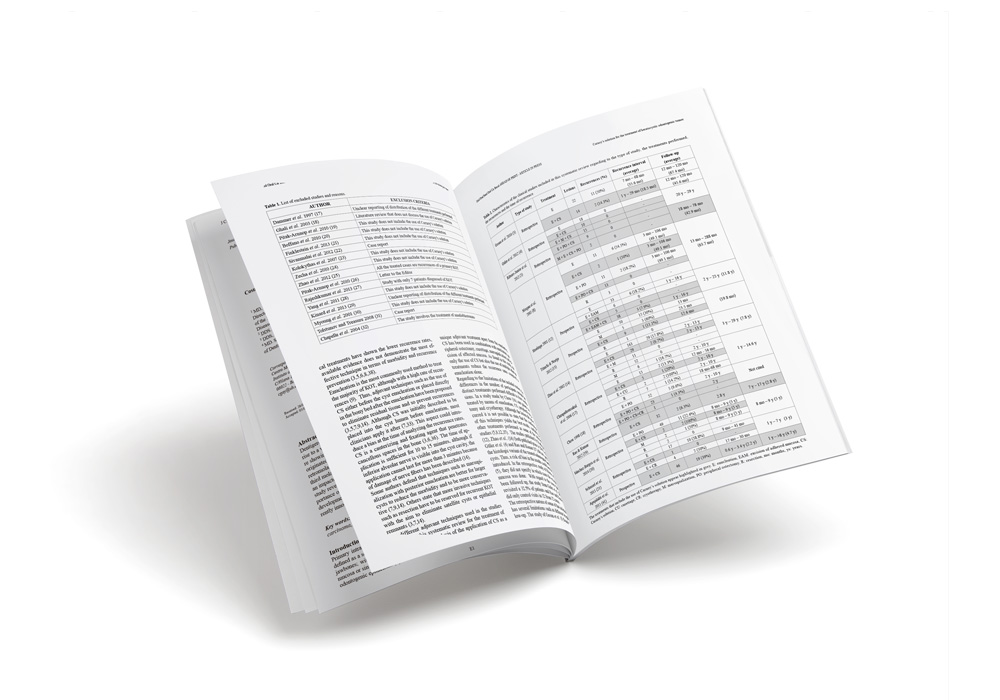
Role of carnoy’s solution in the treatment of keratocystic odontogenic tumor: A systematic review
Introduction and Objective: The keratocystic odontogenic tumor is a benign but aggressive neoplasm. As enucleation alone obtains high recurrence rates, some adjuvant treatments such as Carnoy’s solution have been proposed. The aim of this study is to evaluate the reduction of recurrences with the use of Carnoy’s solution as adjuvant in the treatment of keratocystic odontogenic tumors. Material and Methods: An electronic search in Pubmed (MEDLINE), ScienceDirect and Cochrane databases was conducted with the key words “odontogenic keratocyst”, “keratocystic odontogenic tumor”, “carnoy’s solution”, “treatment” and “enucleation”. The inclusion criteria were clinical studies using Carnoy’s solution as adjuvant for the treatment of keratocystic odontogenic tumors, published in English, including at least 10 patients. Articles with an unclear reporting of the treatment applied, nonhuman studies, case reports and lesions associated to Gorlin-Goltz syndrome were excluded. Results: All the studies included were case series. The recurrence rate of enucleation ranged from 0% to 58.8%. With the only use of Carnoy’s solution as adjuvant treatment to the enucleation, recurrences varied from 0% to
100%. The use of ≥ 2 adjuvant treatments reduced the range between 0% and 7.9%. Conclusions: The use of Carnoy’s solution as adjuvant therapy for the treatment of keratocystic odontogenic tumor
has a grade C recommendation.
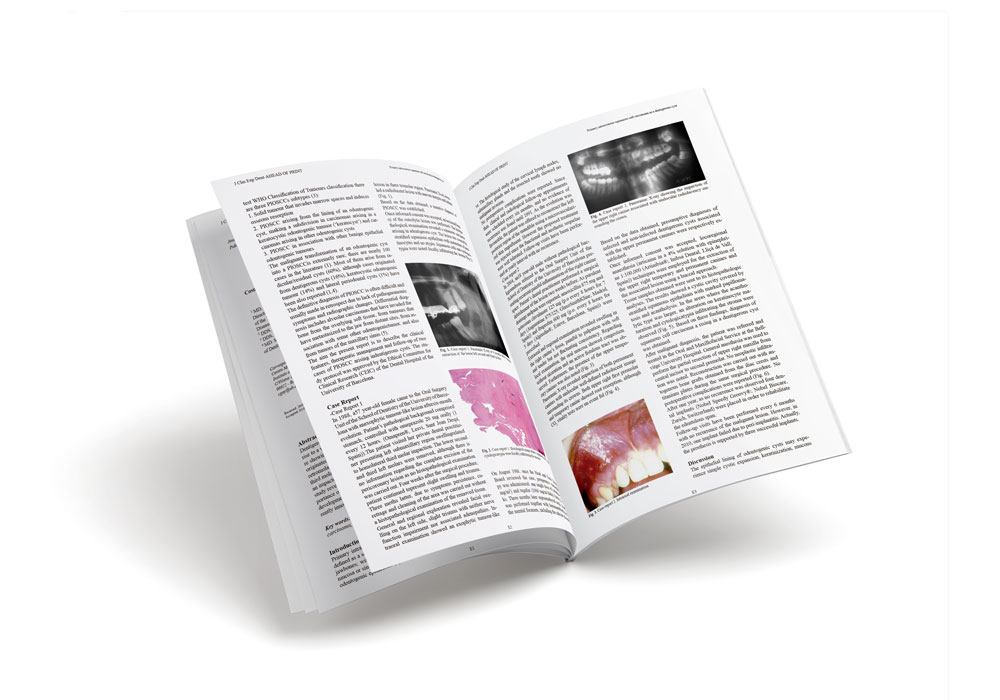
Primary intraosseous squamous cell carcinoma arising in dentigerous cyst: Report of 2 cases and review of the literature.
Dentigerous cysts are one of the most common odontogenic cysts of the oral cavity. Odontogenic cysts can give
rise to a variety of neoplasms. Carcinoma arising in a dentigerous cyst is extremely rare, with a review of literature
showing near 30 cases. The present report describes 2 cases of primary intraosseous squamous cell carcinoma
originated from a dentigerous cyst. The first one refers to a 57-year old female with a persistent lesion in the left
retromolarregion and diagnosed with squamous cell carcinoma originated fromthe incomplete excision of the lower
third molar follicle during its surgical extraction. The second case describes the case of an 18-year old male with
an impacted upper canine with previous history of infection and swelling of the oral cavity. The histopathological
study revealed the malignization of the follicle surrounding the dental crown. These two cases confirmed the importance
of the histopathological study of all the tissue samples obtained from surgical procedures. Although the
development of a malignant lesion from a dentigerous cyst is rare and its clinical-radiological features are apparently
innocuous, this entity should be considered as a differential diagnosis.
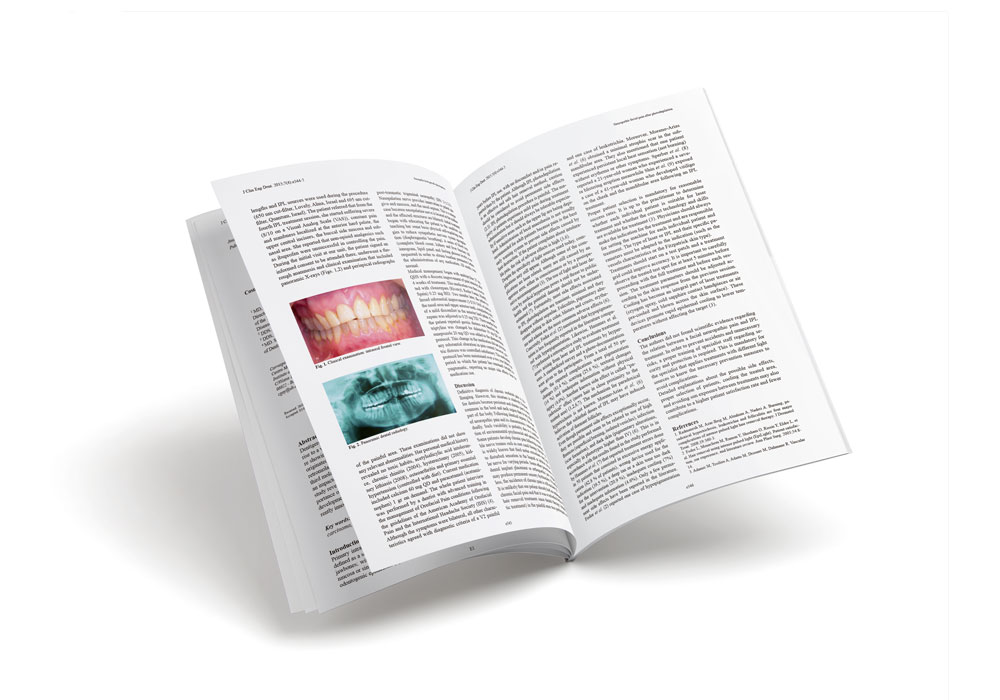
Chronic neuropathic facial pain after intense pulsed light hair removal. Clinical features and pharmacological management
Intense Pulsed Light (IPL) photodepilation is usually performed as a hair removal method. The treatment is recommended to be indicated by a physician, depending on each patient and on its characteristics. However, the use of laser devices by medical laypersons is frequent and it can suppose a risk of damage for the patients. Most side effects associated to IPL photodepilation are transient, minimal and disappear without sequelae. However, permanent side effects can occur. Some of the complications are laser related but many of them are caused by an operator error or mismanagement. In this work, we report a clinical case of a patient that developed a chronic neuropathic facial pain following IPL hair removal for unwanted hair in the upper lip. The specific diagnosis was painful post-traumatic trigeminal neuropathy, reference 13.1.2.3 according to the International Headache Society (IHS).

Salivary gland chroristoma in the buccinator muscle: A case report and literature review.
Salivary gland choristoma (SGCh) is defined as the presence of normal salivary tissue in an abnormal location. It is a rare entity in oral and maxillofacial region and its ethiology is unknown. The typical presentation of salivary gland heterotopia is an asymptomatic mass that may or may not produce saliva. Some examples of ectopic salivary tissue in the pituitary gland, in the lymph nodes, in the middle ear, in the neck, in the jaw, in the thyroid gland, in the mediastinum and in the rectum have been documented in literature. We report the case of a 61-year-old male presented with a bilateral tumorlike mass in the cheek. The mass was painless, of fibrous consistency and had size change with time. The histological diagnosis was salivary gland choristoma in the buccinator muscle. In this article, we will revise the characteristic of salivary gland heterotopias and
we present a report case that has not been described in literature: a bilateral choristoma of salivary gland in the buccinator muscle, which should be included in the differential diagnosis of head and neck masses.
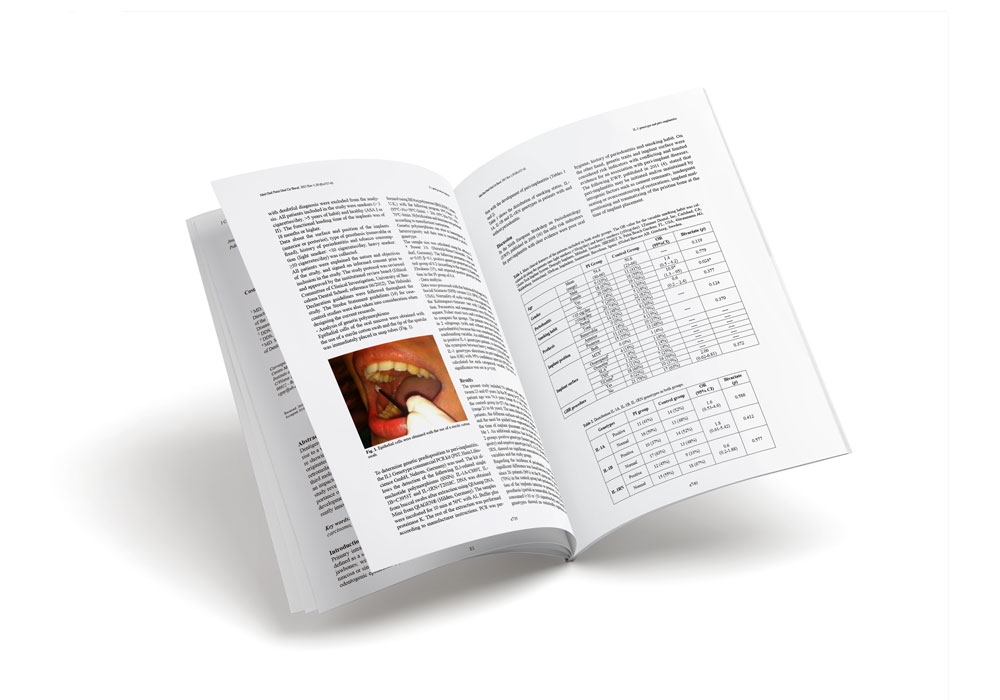
Clinical significance of interleukin-1 genotype in smoking patients as a predictor of peri-implantitits: A case-control study.
Background: Interleukin-1 (IL-1) is a proinflammatory cytokine that plays an important role in the pathogenesis of periodontitis, and so it might be useful to detect high-risk cases of peri-implantitis. It has been reported that IL-1 polymorphisms and smoking habit have a synergic effect, increasing the incidence of peri-implantitis. The aim of the present study was to evaluate the relationship between IL-1 gene polymorphisms and peri-implantitis in smoking patients. Material and Methods: A case-control study was performed in 27 patients with peri-implantitis and 27 patients
with healthy implants. All patients included were smokers. IL-1A-C889T, IL-1B+C3953T and IL-1RN+T2018C were identified by polymerase chain reaction (PCR) amplification in order to establish a relation between these variables and the presence of peri-implantitis. A bivariate analysis was performed and odds-ratio (OR) were calculated. Results: The incidence of peri-implantitis was significantly higher in patients with previous history of periodontitis (p=0.024; OR=10.9). Both groups were similar regarding IL-1A-C889T, IL-1B+C3953T and IL-1RN+T2018C genotypes. No increased risk in heavy smokers with IL-1 polymorphism was found.
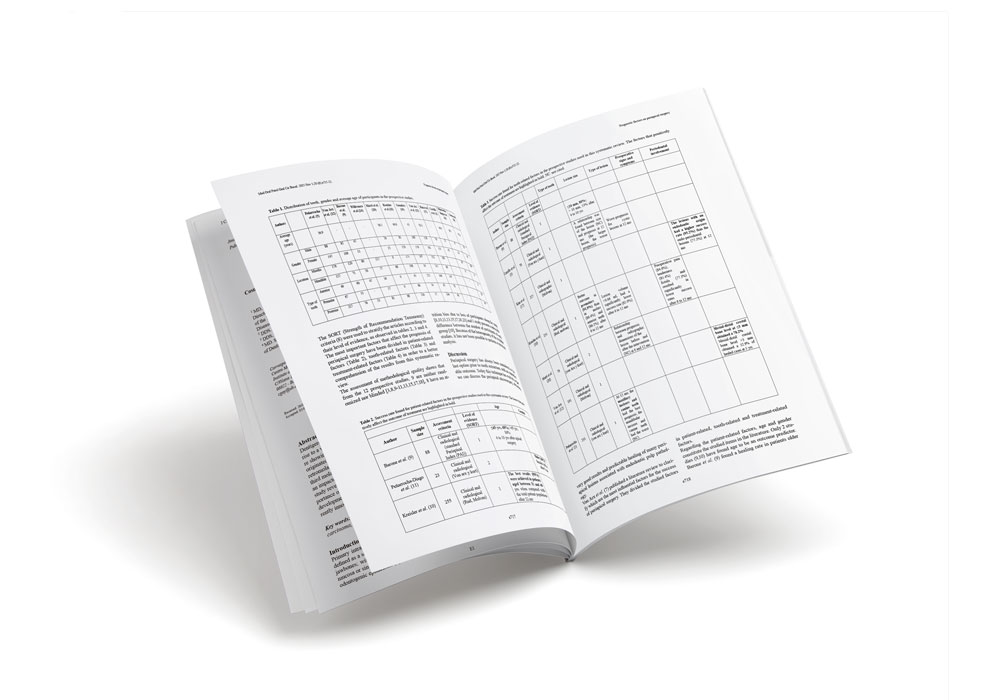
Prognostic factors on periapical surgery: A systematic review
Background: Analyze the most important prognostic factors when performing periapical surgery and compare the success rates of distinct authors.
Introduction: Periapical surgery is an approach to treat non-healing periapical lesions and it should be viewed as an extension of endodontic treatment and not as a separate entity. Material and Methods: A search of articles published in Cochrane, PubMed (MEDLINE) and Scopus was conducted with the key words “prognostic factors”, “prognosis”, “periapical surgery”, “endodontic surgery” and “surgical endodontic treatment”. The inclusion criteria were articles including at least 10 patients, published in English, for the last 10 years. The exclusion criteria were nonhuman studies and case reports. Results: 33 articles were selected from 321 initially found. Ten articles from 33 were excluded and finally the systematic
review included 23 articles: 1 metaanalysis, 1 systematic review, 2 randomized clinical trials, 6 reviews, 12 prospective studies and 1 retrospective study. They were stratified according to their level of scientific evidence using the SORT criteria. Conclusions: Factors associated with a better outcome of periapical surgery are patients ≤45 years old, upper anterior or premolar teeth, ≤10 sized lesions, non cystic lesions, absence of preoperative signs and symptoms, lesions without periodontal involvement, teeth with an adequate root-filling length, MTA as root-end filling material, uniradicular teeth, absence of perforating lesions, apical resection < 3 mm, teeth not associated to an oroantral fistula and teeth with only one periapical surgery.
